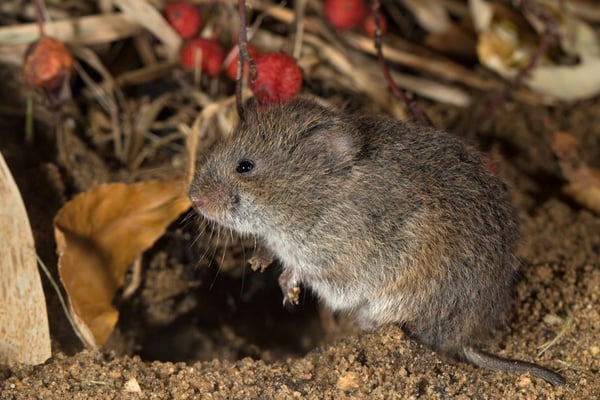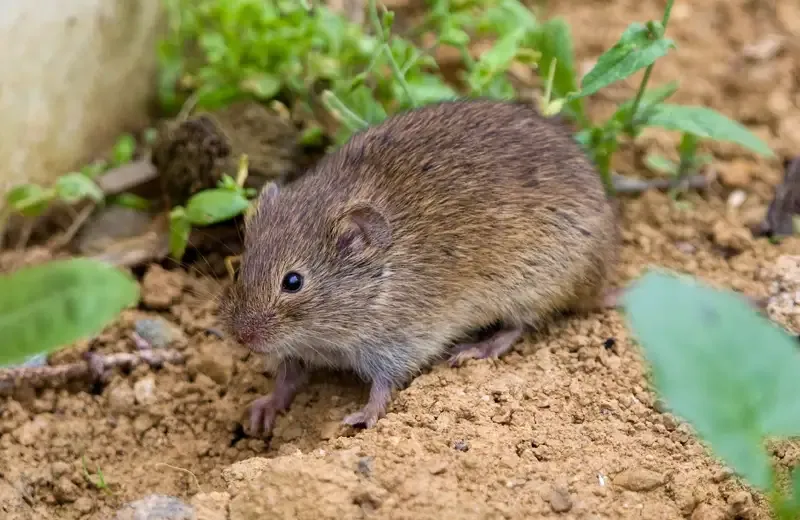Managing Vole Damage: Effective Control Strategies
Managing Vole Damage: Effective Control Strategies
Blog Article
Comprehensive Guide to Efficient Vole Bug Control: Invasion Recognition and Therapy Methods
In the world of effective pest control, vole invasions present an unique challenge that requires a calculated strategy. By discovering the subtleties of vole behavior, recognizing vital indications of problem, and examining a variety of control options, one can develop a detailed strategy to fight these elusive insects.
Recognizing Vole Actions
Vole actions is characterized by their tunneling routines and quick reproduction rates, making them a difficult pest to control efficiently. Their fast reproductive rate additional complicates control initiatives, with ladies capable of creating several trashes in a single year, each containing a number of spawn.
Recognizing vole actions is important for reliable bug control techniques. By identifying their burrow areas, keeping track of feeding locations, and applying targeted control approaches, such as trapping or environment alteration, vole invasions can be managed successfully.
Indicators of Vole Infestation

Avoidance Methods
Executing reliable avoidance strategies is vital in reducing vole invasions and guarding vegetation from their damaging feeding behaviors (vole pest control). To avoid vole invasions, it is important to start by getting rid of possible food resources and sanctuary. Maintain grass and greenery trimmed short, eliminate weeds and debris, and maintain a neat garden or lawn to make the location less eye-catching to voles. Installing obstacles such as equipment towel or below ground fence can likewise help discourage voles from going into specific areas. Furthermore, lowering excess dampness by dealing with leaking pipelines and making certain correct drain can make the atmosphere much less hospitable for voles.
Consistently checking the residential property for indicators of vole activity, such as paths and tunnel openings, is important for very early detection and punctual action. Take into consideration utilizing catches or repellents purposefully positioned near their pathways if vole task is presumed. Employing all-natural predators like owls or serpents can likewise help maintain vole populaces in check. By carrying out a mix of these prevention gardeners, approaches and property owners can effectively safeguard their plant life from vole damage.
Non-Lethal Control Techniques
To successfully manage vole populations while focusing on gentle techniques, non-lethal control approaches provide functional remedies for reducing vole damage in landscapes and gardens. One efficient approach is the usage of physical obstacles such as equipment towel or wire mesh to safeguard prone plants. These barriers can be buried a minimum of 12 inches deep and curved at a 90-degree angle to avoid voles from burrowing underneath. Additionally, habitat modification can discourage voles by decreasing their chosen food sources and concealing areas. Preserving a well-mowed lawn, removing debris, and maintaining plant life have a peek at this website trimmed can make the setting less attractive to voles.

Lethal Control Options
One reliable technique for dealing with vole problems in yards and landscapes entails the strategic usage of lethal control choices. When encountered with a serious vole invasion that non-lethal methods have fallen short to contain, applying lethal control actions becomes critical. One typically utilized dangerous control choice is the usage of snap traps. These catches are made to promptly and humanely kill voles upon activation, making them a preferred selection for many gardeners and landscaping companies. To enhance the performance of breeze catches, it is recommended to put them in locations where vole activity is high, this hyperlink such as along runways or near burrow entrances. One more deadly control choice is the utilization of harmful baits particularly developed to target voles. These baits have poison that is ingested by the voles, resulting in their eventual death. However, caution must be exercised when using harmful lures to stop harm to non-target animals or pets. Overall, when utilizing dangerous control choices, it is vital to do so sensibly and based on regional regulations to properly handle vole infestations.
Verdict
Finally, reliable vole bug control calls for an extensive understanding of vole behavior, recognition of signs of invasion, implementation of avoidance techniques, and utilization of both lethal and non-lethal control approaches. By incorporating these methods, people can effectively handle vole populations and shield their home from damage. It is crucial to deal with vole problems quickly to stop additional concerns and minimize the influence on the surrounding environment.
Provided the detailed tunnel systems and fast recreation prices characteristic of voles, identifying the signs of vole invasion comes to be essential in efficient pest control. One of the main signs of vole visibility is the presence of surface paths or routes in yard or snow, usually concerning 1-2 inches vast, produced as voles take a trip in between their burrows and food resources.To properly take care of vole populaces while prioritizing gentle techniques, non-lethal control approaches use practical services for minimizing vole damages in landscapes and yards.One effective technique for resolving vole problems in landscapes and yards entails the tactical use of lethal control options. vole control.In conclusion, reliable vole pest control requires a comprehensive understanding of vole behavior, recognition of signs of infestation, implementation of prevention strategies, and application of both non-lethal and dangerous control techniques
Report this page